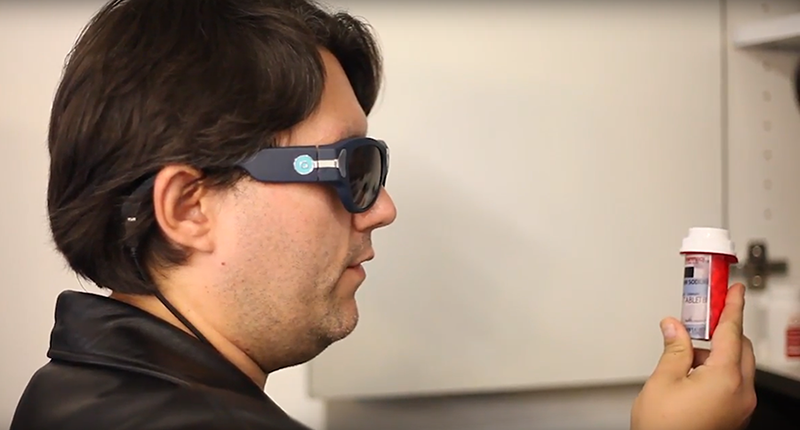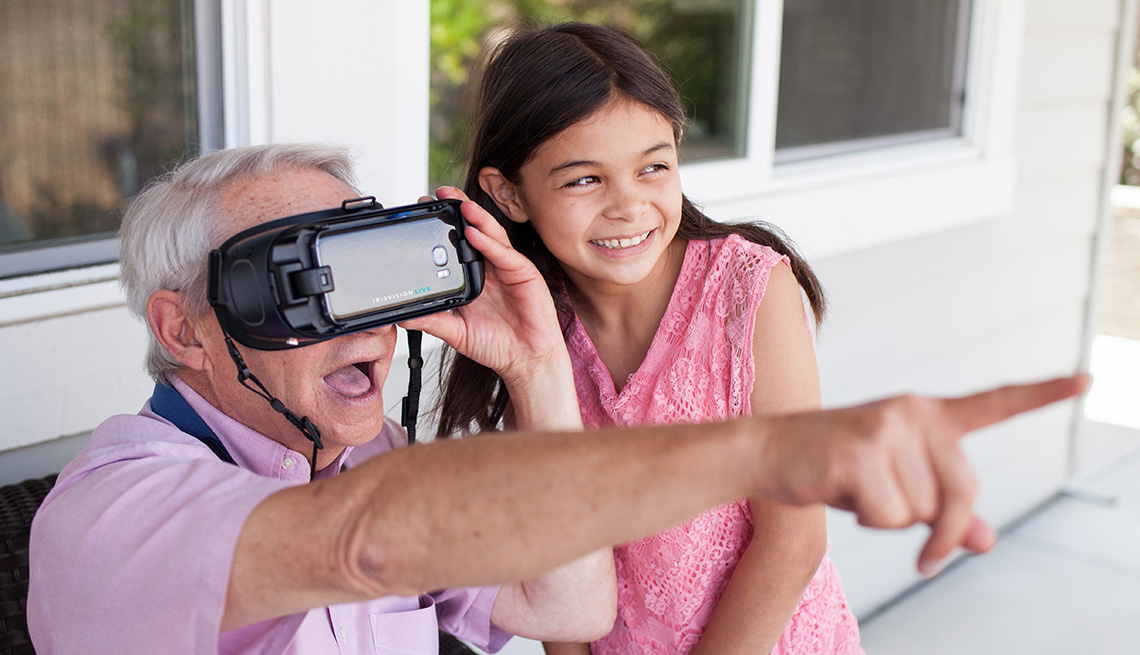Discover Innovative Devices Created for the Visually Impaired
The development of ingenious tools for the visually damaged represents a considerable development in availability and freedom. Technologies such as wise glasses with AI abilities and mobile applications designed to provide acoustic descriptions are reshaping daily experiences for individuals. Furthermore, wearable gadgets that use haptic comments improve ecological recognition, while contemporary Braille developments offer brand-new ways to involve with text. As these devices remain to evolve, their influence on the lives of those with aesthetic impairments raises essential questions concerning the future of inclusivity and freedom in various aspects of life. What exists ahead in this technical landscape?
Smart Glasses for Navigating

Smart glasses created for navigation are reinventing the method visually impaired people communicate with their environment. These innovative tools use a combination of electronic camera innovation, expert system, and acoustic comments to provide real-time details about environments. By utilizing obstacle detection systems, smart glasses can notify individuals to potential risks, allowing much safer wheelchair in both familiar and unfamiliar setups.
The combination of GPS technology better enhances navigating capabilities, permitting users to get acoustic directions as they move. This hands-free strategy not only promotes freedom but additionally empowers aesthetically damaged individuals to navigate city landscapes with increased self-confidence. Furthermore, several clever glasses are geared up with attributes that identify spots and street indications, giving contextual information that improves the customer experience.
Moreover, the development of these gadgets is continually advancing, with business functioning to boost the precision of object recognition and broaden the variety of navigational attributes. As clever glasses become more available and cost effective, they hold the prospective to substantially change life for visually impaired individuals. Eventually, these ingenious tools represent a crucial action towards inclusivity, offering boosted flexibility and a better sense of freedom for people browsing the globe around them.

Mobile Application for Daily Living
How can mobile applications boost the day-to-days live of visually damaged people? Mobile applications are transforming the means visually damaged customers navigate their environments, handle day-to-day jobs, and access info. These applications supply necessary support with numerous performances, cultivating freedom and improving top quality of life.
Several innovative mobile apps are made specifically for daily living. Apps like Be My Eyes link aesthetically damaged individuals with sighted volunteers by means of video clip phone calls, enabling them to get real-time help with jobs such as reviewing tags or browsing unknown areas. Seeing AI, created by Microsoft, utilizes synthetic intelligence to define environments, reviewed text, and identify objects, properly changing a smartphone into an effective device for daily assistance.
In addition, navigation apps tailored for the aesthetically impaired, such as Aira and BlindSquare, offer audio-based instructions and environmental details, making it possible for customers to traverse their environments safely and with confidence. Past navigation and instant support, mobile apps additionally support company and task management, with functions that help customers set reminders, develop to-do listings, and track appointments. In recap, mobile applications function right here as indispensable sources, empowering aesthetically impaired people to lead more independent and satisfying lives.
Wearable Technologies for Aid
Empowerment with innovation is significantly apparent in the world of wearable devices created to assist visually impaired individuals. These cutting-edge devices integrate effortlessly into daily life, improving navigation and supplying important responses to users. For instance, clever glasses geared up with cameras can acknowledge faces and review text out loud, allowing individuals to interact more confidently in social and specialist settings.
One more remarkable advancement is making use of haptic responses systems in wearable gadgets. These systems utilize vibrations or other tactile signals to communicate info regarding the individual's atmosphere, such as challenges or adjustments in surface, boosting flexibility and safety and security. Wearable modern technologies also include wristbands that attach to smart devices, signaling customers to alerts via refined resonances, hence boosting connection without dependence on visual cues.
As these technologies remain to develop, they are not only improving independence for aesthetically damaged individuals however likewise fostering a greater feeling of incorporation in society. By bridging the space between difficulties dealt with in day-to-day living and the capacity for autonomy, wearable technologies act as crucial devices in the quest for equal rights and empowerment for those with aesthetic disabilities.
Audio Summary Devices
Audio summary tools play an important function in enhancing accessibility for aesthetically impaired individuals, giving them with the capacity to involve with visual media. Wearable technology for low vision. These tools use narrated descriptions of crucial aesthetic components in films, tv shows, and live efficiencies, ensuring that individuals can fully comprehend the context and feelings conveyed with visuals
Sound description can be incorporated into numerous platforms, including streaming services, cinema screenings, and live theater. Lots of preferred streaming solutions currently include audio summary as an ease of access attribute, allowing viewers to pick it easily. Along with mainstream media, specialized apps likewise exist, giving audio descriptions for art events, galleries, and other cultural occasions.
The performance of audio description depends upon the skill of the storytellers, that should share aesthetic information succinctly without diminishing the initial audio. Developments in this area are additionally leading the way for more individualized experiences, where customers can change the level of detail and pacing according to their preferences.
Braille Innovations and Instruments
Braille innovations and gadgets have substantially changed the means aesthetically damaged people connect with text and information. Modern developments have led to the advancement of functional devices that boost literacy and self-reliance amongst individuals.
In addition, mobile Braille notetakers incorporate traditional Braille input with modern capabilities, facilitating note-taking, scheduling, and document great site editing on the go. Screen readers for the blind. These small gadgets usually include text-to-speech capacities, linking the void in between Braille and auditory information
On top of that, cutting-edge Braille printers have actually arised, enabling users to produce Braille tags, records, and academic materials successfully. This ease of access promotes higher participation in professional and educational settings, eventually promoting inclusivity.
In addition, research study into clever Braille innovations continues internet to expand. Instruments that integrate expert system are being checked out to provide real-time navigating assistance and contextual details, enhancing the customer experience in varied settings. On the whole, these developments show a commitment to encouraging visually damaged individuals with technology, guaranteeing they can easily access and involve with the globe around them.

Verdict
The improvement of innovative devices for the visually impaired dramatically improves freedom and high quality of life. These modern technologies not only foster better addition yet also advertise autonomy in day-to-day activities, eventually adding to a more equitable and accessible culture for aesthetically impaired people.
As clever glasses end up being more accessible and economical, they hold the possible to considerably change daily life for visually impaired individuals. Mobile apps are reinventing the means visually damaged users navigate their atmospheres, handle day-to-day jobs, and gain access to info. Applications like Be My Eyes link aesthetically damaged users with sighted volunteers through video phone calls, permitting them to obtain real-time assistance with jobs such as reading labels or navigating unfamiliar areas.Furthermore, navigation apps tailored for the visually damaged, such as Aira and BlindSquare, offer audio-based directions and environmental details, enabling users to traverse their surroundings safely and with confidence.The advancement of innovative tools for the visually damaged substantially improves self-reliance and high quality of life.